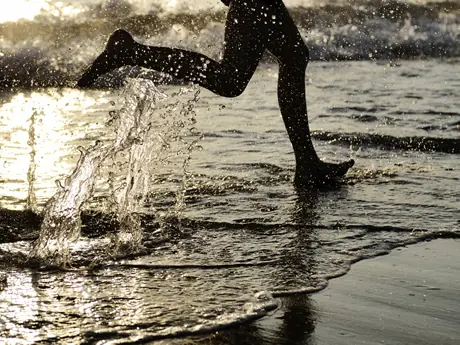
Dean Karnazes is some kind of machine. About 10 years ago, he set off on a run and kept churning along for almost 81 hours without sleep or even a power nap, tallying 350 miles. His burgeoning logbook also includes pounding out 300 miles per week for more than 10 weeks to cross the continental United States.
Surely, someone who pounds the pavement to such an extent has an equally dramatic injury logbook. This isn't the case. Rather—as a testament to the value of his all-around set of disciplines—injuries have been limited to the likes of an occasional blood blister.
More: Beginner's Triathlon Gear List
Karnazes offers the following ideas on how to steer clear of injury potholes:
1. Daily No-Excuses Functional Strength Training. "I think total body training is essential, at least for what I do," Karnazes told me. For him, this includes punching out five or six bodyweight "Grinder" PT sessions, drawn from the Navy SEALS. Taking a break from his log book, or his on-going training-and-nutrition research, Karnazes will bust out circuits of multi-joint exercises like push-ups, pull-ups and abdominal exercises.
2. Beware of the Chair. Karnazes looks at sitting in a chair like a germaphobe might consider a porta-potty: a situation coated with dire health risks. For example, his home office is equipped with a standing desk. The direct benefits? By avoiding sitting one avoids the consequences of shortening the muscles and tissues surrounding the hip capsules and lower back. Also, metabolism gets a natural boost and by standing rather than sitting, the body's lymphatic system is better able to do it's job.
More: How to Find Time for Triathlon Training When You Have Kids
3. Running Shoes: Least Is Best. Well-before the Born to Run craze, Karnazes was a proponent of the occasional practice of barefoot running in the late 1970s: He'd run to the beach, hide his shoes in the bushes, and then gallop off barefoot in the sand. This kind of work, Karnazes found, strengthened the mechanisms and elasticity of the feet. This experience continues to underscore his belief that when it comes to shoes less is more, and advises using a minimal, neutral shoe—devoid of teetering heel-to-toe offsets and various stability gadgets—is the best way to let a foot be a foot and build one's natural resiliency to injuries.
More: 11 Tips for Your First Triathlon
 Sign up for your first sprint triathlon.
Sign up for your first sprint triathlon.








Discuss This Article